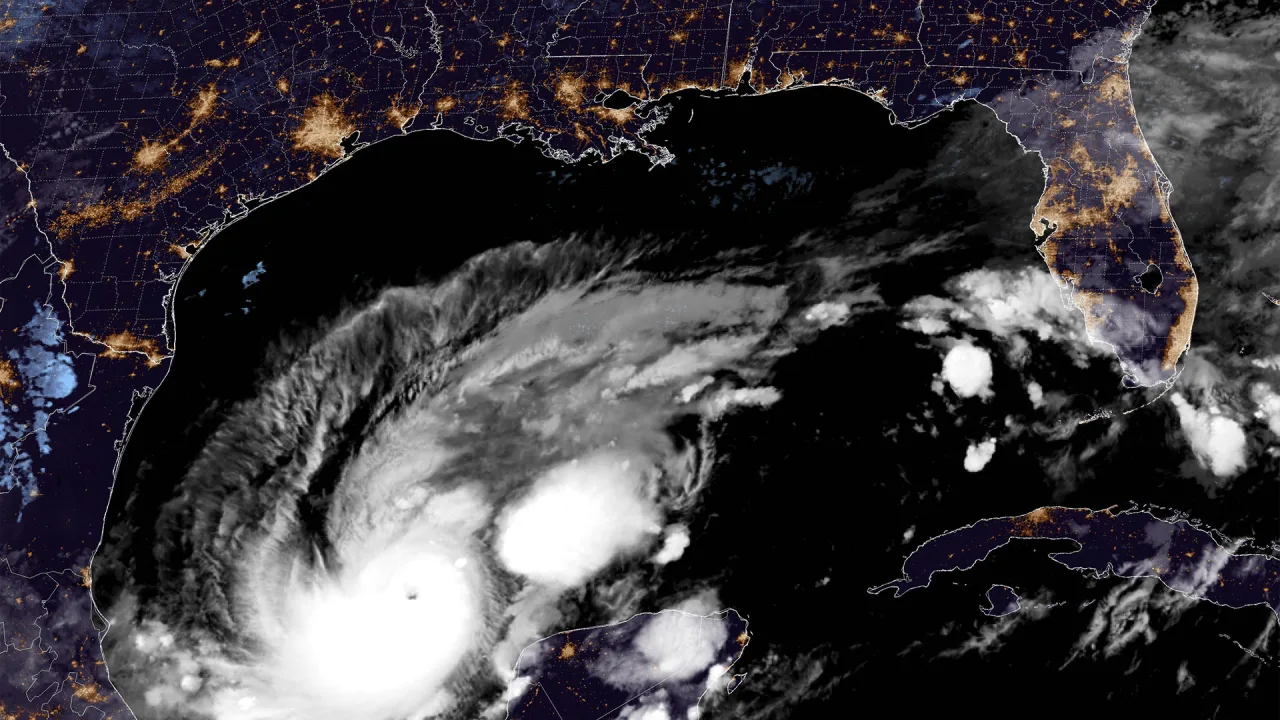Hurricane Milton live tracker: Map tools and apps follow the powerful storm’s path in real time as it approaches Florida
Hurricane Milton has rapidly escalated to a Category 3 storm and continues to gain strength just two days before its anticipated landfall on Florida’s Gulf Coast. Currently, the storm features sustained winds of 120 mph, according to the National Hurricane Center. Milton is forecast to reach Category 4 status by Tuesday and make landfall on Wednesday evening as a powerful and potentially devastating Category 3 storm with 120-mph winds. The storm is expected to strike between Cedar Key and Naples, encompassing the Tampa area. Milton is poised to strengthen steadily or even rapidly in the coming days. Its maximum sustained wind speed more than doubled from Sunday to Monday morning, significantly exceeding the threshold for rapid intensification, which is defined as a 35 mph increase within 24 hours. This follows closely on the heels of Storm Helene, which struck the southeastern United States just 10 days ago, becoming the deadliest mainland storm since Katrina in 2005, with at least 225 fatalities. Hundreds more are still unaccounted for. Milton began intensifying on Tuesday in the Caribbean Sea, fueled by unusually warm Gulf waters. The storm currently has sustained winds of 80 mph, according to the National Hurricane Center. Milton will be the fifth hurricane to hit Florida since 2022 and the fourth to make landfall in the U.S. this year alone. How to track Hurricane Milton’s path in real time The storm’s path puts Tallahassee, Florida’s capital, in the direct line of impact. It is predicted to hit the Panhandle late Thursday before moving into Albany, Georgia, early Friday. As it continues, the storm is expected to pass through parts of Georgia, Alabama, and Tennessee before weakening as it heads into the Midwest over the weekend. For the most up-to-date information on Hurricane Milton’s location, projected trajectory, and real-time tracking, check the following sources: Esri’s Hurricane Aware App: This resource uses the ArcGIS Living Atlas of the World and data from government sources to track the potential impact of storms. National Hurricane Center: NOAA’s dedicated Milton page offers an array of frequently updated maps and graphics. The Weather Channel: The Weather Channel has a dedicated Milton page with Spaghetti models and more. CNN Storm Tracker: CNN’s dedicated Milton page has a number of interactive tools updating in real time.

Hurricane Milton has rapidly escalated to a Category 3 storm and continues to gain strength just two days before its anticipated landfall on Florida’s Gulf Coast. Currently, the storm features sustained winds of 120 mph, according to the National Hurricane Center.
Milton is forecast to reach Category 4 status by Tuesday and make landfall on Wednesday evening as a powerful and potentially devastating Category 3 storm with 120-mph winds. The storm is expected to strike between Cedar Key and Naples, encompassing the Tampa area.
Milton is poised to strengthen steadily or even rapidly in the coming days. Its maximum sustained wind speed more than doubled from Sunday to Monday morning, significantly exceeding the threshold for rapid intensification, which is defined as a 35 mph increase within 24 hours.
This follows closely on the heels of Storm Helene, which struck the southeastern United States just 10 days ago, becoming the deadliest mainland storm since Katrina in 2005, with at least 225 fatalities. Hundreds more are still unaccounted for.
Milton began intensifying on Tuesday in the Caribbean Sea, fueled by unusually warm Gulf waters. The storm currently has sustained winds of 80 mph, according to the National Hurricane Center.
Milton will be the fifth hurricane to hit Florida since 2022 and the fourth to make landfall in the U.S. this year alone.
How to track Hurricane Milton’s path in real time
The storm’s path puts Tallahassee, Florida’s capital, in the direct line of impact. It is predicted to hit the Panhandle late Thursday before moving into Albany, Georgia, early Friday. As it continues, the storm is expected to pass through parts of Georgia, Alabama, and Tennessee before weakening as it heads into the Midwest over the weekend.
For the most up-to-date information on Hurricane Milton’s location, projected trajectory, and real-time tracking, check the following sources:
- Esri’s Hurricane Aware App: This resource uses the ArcGIS Living Atlas of the World and data from government sources to track the potential impact of storms.
- National Hurricane Center: NOAA’s dedicated Milton page offers an array of frequently updated maps and graphics.
- The Weather Channel: The Weather Channel has a dedicated Milton page with Spaghetti models and more.
- CNN Storm Tracker: CNN’s dedicated Milton page has a number of interactive tools updating in real time.






















